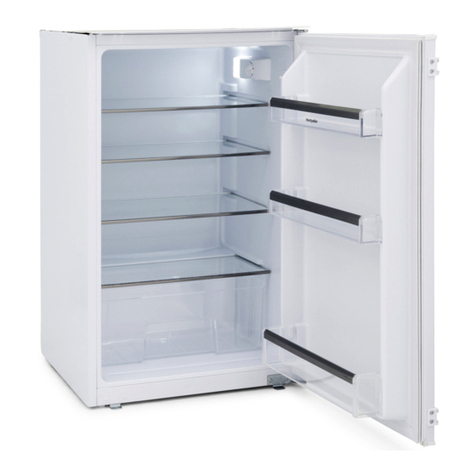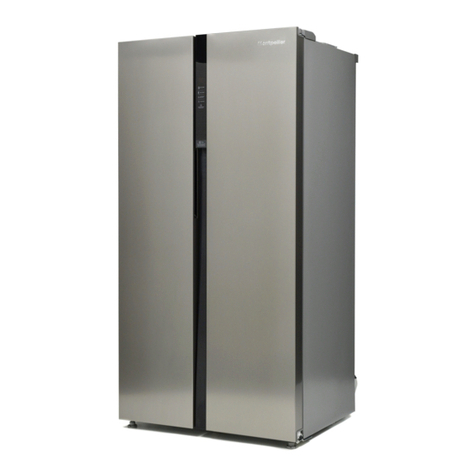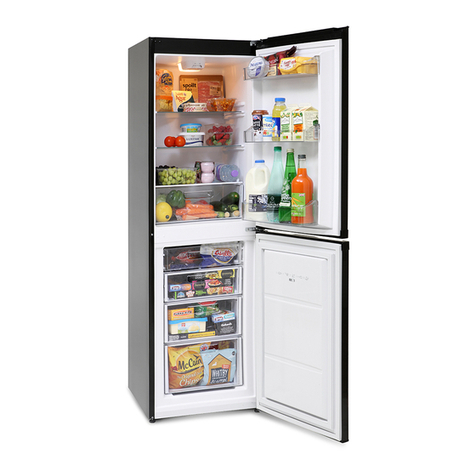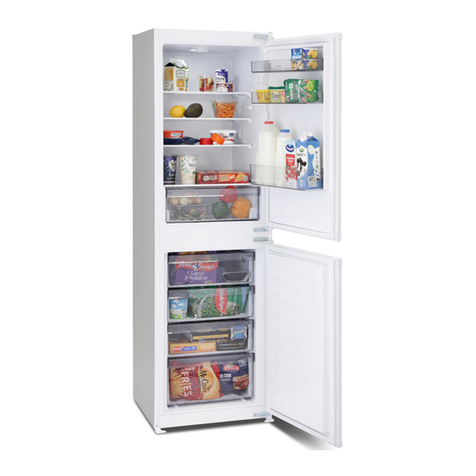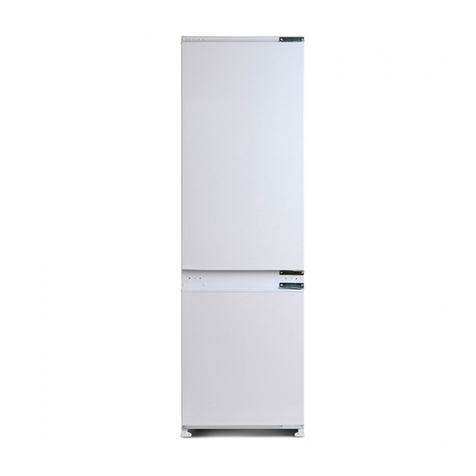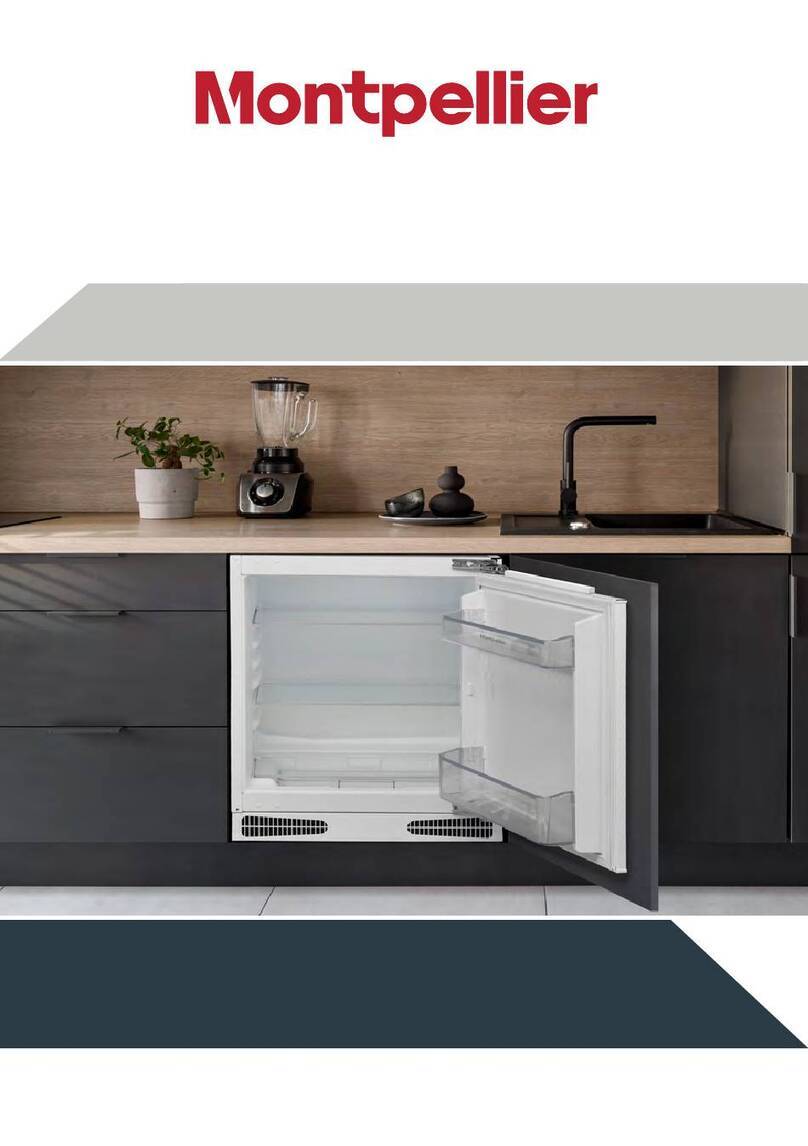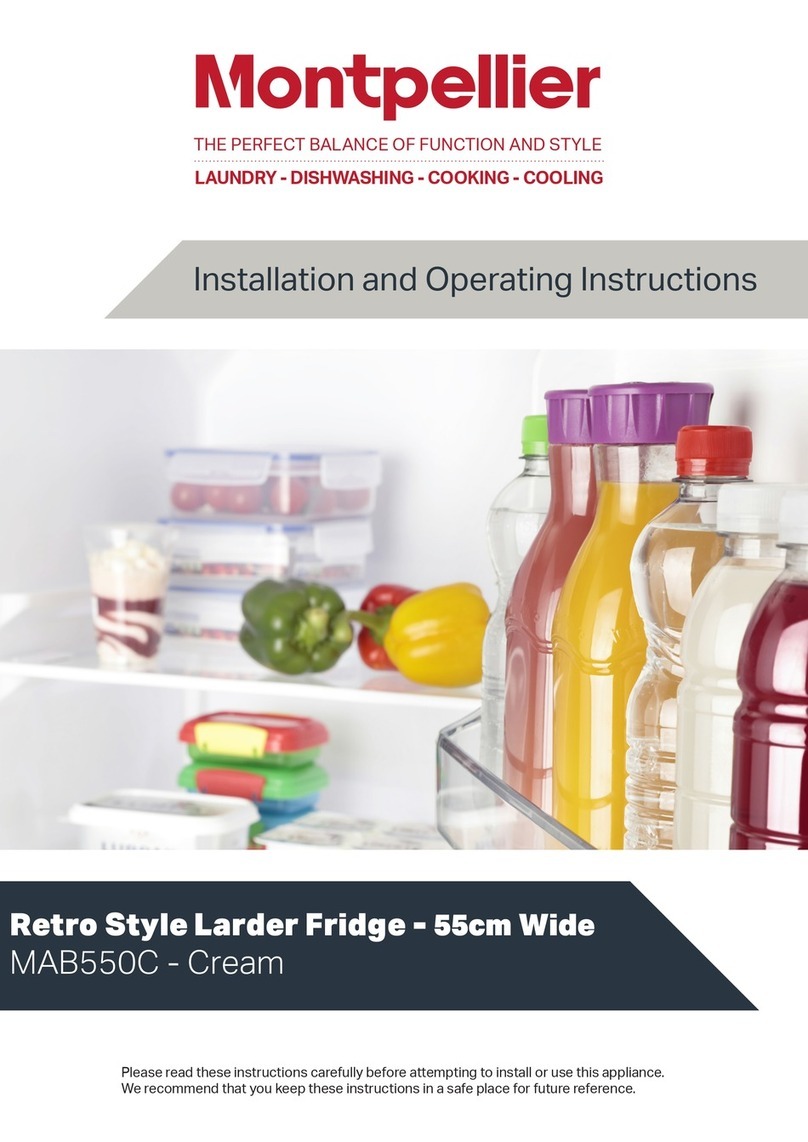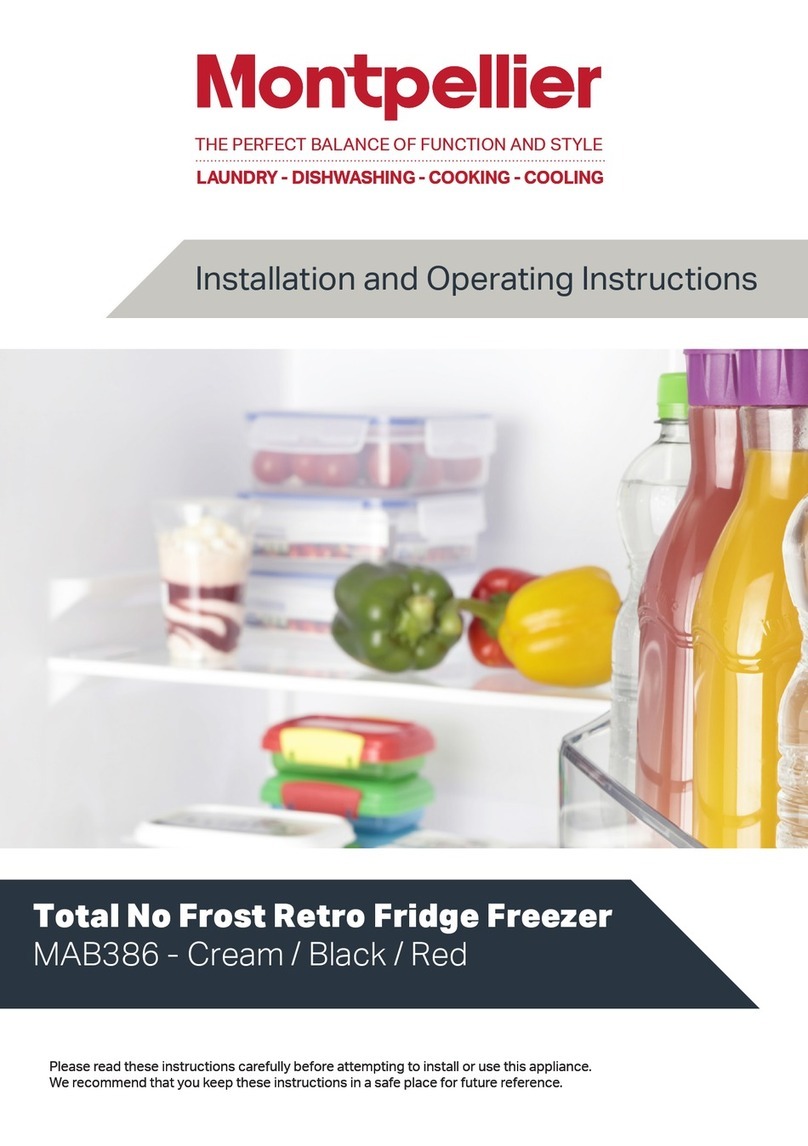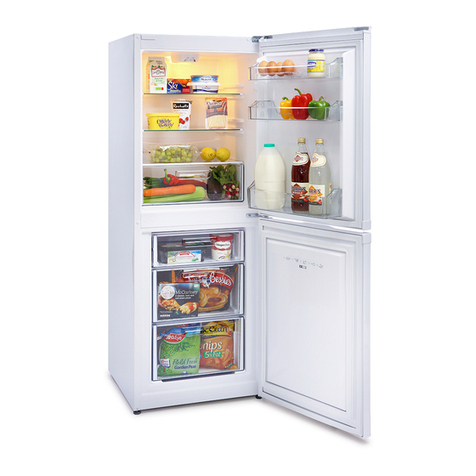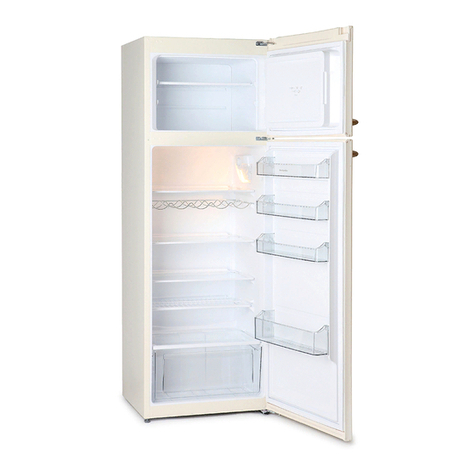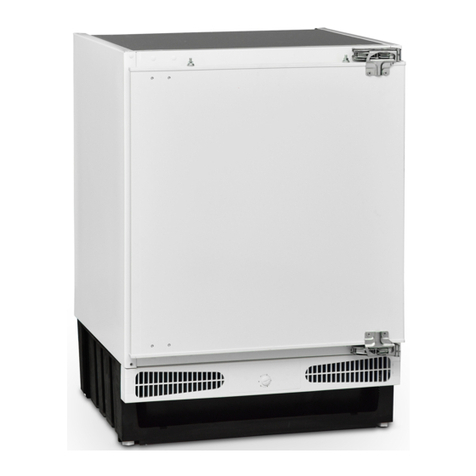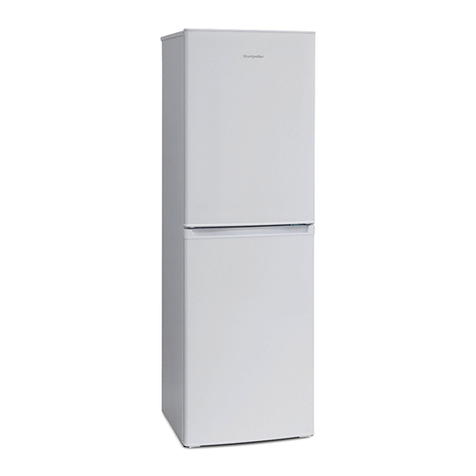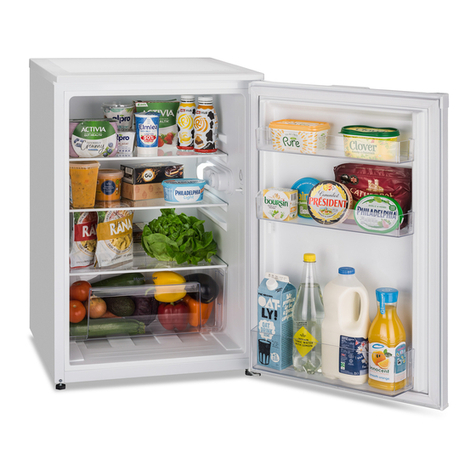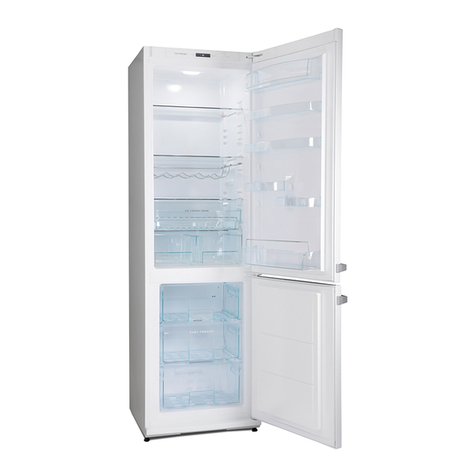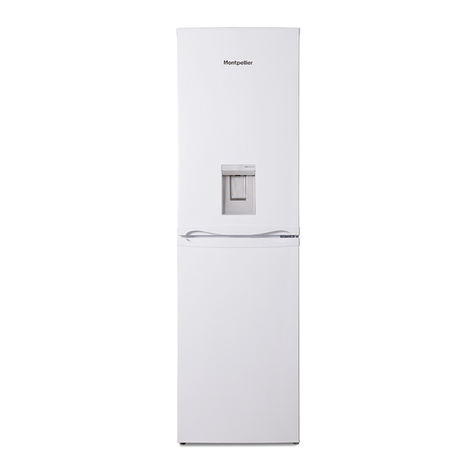
EN - 8
1.2 Installation warnings
Before using your fridge freezer for the
first time, please pay attention to the
following points:
• The operating voltage for your fridge
freezer is 220-240 V at 50Hz.
• The plug must be accessible after
installation.
• Your fridge freezer may have an odour
when it is operated for the first time. This
is normal and the odour will fade when
your fridge freezer starts to cool.
•Before connecting your fridge freezer,
ensure that the information on the data
plate (voltage and connected load)
matches that of the mains electricity
supply. If in doubt, consult a qualified
electrician.
•Insert the plug into a socket with an
efficient ground connection. If the socket
has no ground contact or the plug does
not match, we recommend you consult a
qualified electrician for assistance.
• The appliance must be connected
with a properly installed fused socket.
The power supply (AC) and voltage at
the operating point must match with
the details on the name plate of the
appliance (the name plate is located on
the inside left of the appliance).
• We do not accept responsibility for any
damages that occur due to ungrounded
usage.
• Place your fridge freezer where it will not
be exposed to direct sunlight.
•Your fridge freezer must never be used
outdoors or exposed to rain.
•Your appliance must be at least 50 cm
away from stoves, gas ovens and heater
cores, and at least 5 cm away from
electrical ovens.
• If your fridge freezer is placed next to a
deep freezer, there must be at least 2 cm
between them to prevent humidity
forming on the outer surface.
•Do not place heavy items on the
appliance.
• Do not cover the body or top of fridge
freezer with lace. This will affect the
performance of your fridge freezer.
• Clearance of at least 150 mm is required
at the top of your appliance. Do not place
anything on top of your appliance.
• Clean the appliance thoroughly before use
(see Cleaning and Maintenance).
•Before using your fridge freezer, wipe all
parts with a solution of warm water and a
teaspoon of sodium bicarbonate. Then,
rinse with clean water and dry. Return all
parts to the fridge freezer after cleaning.
• Use the adjustable front legs to make sure
your appliance is level and stable. You
can adjust the legs by turning them in
either direction. This must be done before
placing food in the appliance.
• Install the plastic distance guide(s) on the
condenser (black vanes
at the rear of the
appliance) by turning it
90° (as shown in the
figure) to prevent the
condenser from touching
the wall.
• The distance between the appliance and
back wall must be a maximum of 75 mm.
Important installation instructions
This appliance is designed to work in difficult
climate conditions (up to 43 degrees C or
110 degrees F) and is powered with
‘Freezer Shield’ technology which ensures
that the frozen food in the freezer will not
defrost even if the ambient temperature falls
as low as -15 °C. So you may then install
your appliance in an unheated room without
having to worry about frozen food in the
freezer being spoilt. When the ambient
temperature returns to normal, you may
continue using the appliance as usual.
